Don't wanna be here? Send us removal request.
Text
FMP
Final Major Project 2019
Unit 9 Professional & Personal Practice incorporating Unit 10 Blog
Project Summary
The New Orchestra Manifesto
Context
Exploring the noises that make up the world, as defined by (a revised version of The Art of Noises manifesto, written in 1913 by Luigi Russolo.
Research Focus
Research the way in which we perceive sound and how the world has changed acoustically since 1913.
Audience
An audience interested in world of noise we live in.
Media
Audio recording, editing, website coding, and filmmaking.
Outcome
A designed manifesto, website and live performance film.
Professional Practice
Phillip Mill is an audio engineer who provide critical advice on technical audio recording and editing for surround sound.
A big inspiration for my final project has been the Tunnel by Friedrich Durrenmatt
The New Orchestra Project intends to explore the noises that make up the world, as defined by The Art of Noises manifesto, written in 1913 by Luigi Russolo. In which, he outlines the noises in six sections, with the intention of realising these sounds mechanically using pitch and speed as tool for manipulation. Since the original manifesto, the world has changed in many different ways and this project intends to consider Russolo’s manifesto by updated terms.
To do this, he created the Intonarumori, a group of experimental musical instruments where a wheel rattled or bowed the strings, while the drum functioned as an acoustic resonator. The Art of Noises is considered by some authors to be one of the most important and influential texts in 20th-century musical aesthetics.
In the digital age we live in, it seems only appropriate to define the new instruments as MIDI controllers and DAW’s. These combined allow for an even greater experimentation.
My intentions are to make a website, allowing the updated manifesto and sounds to be available for anyone to use. It is also important to perform my own interpretation, as an example of the variety of timbres that these noises can create. The name of this project is a reference to the original manifesto, and it is very much a celebration of Russolo’s thinking.
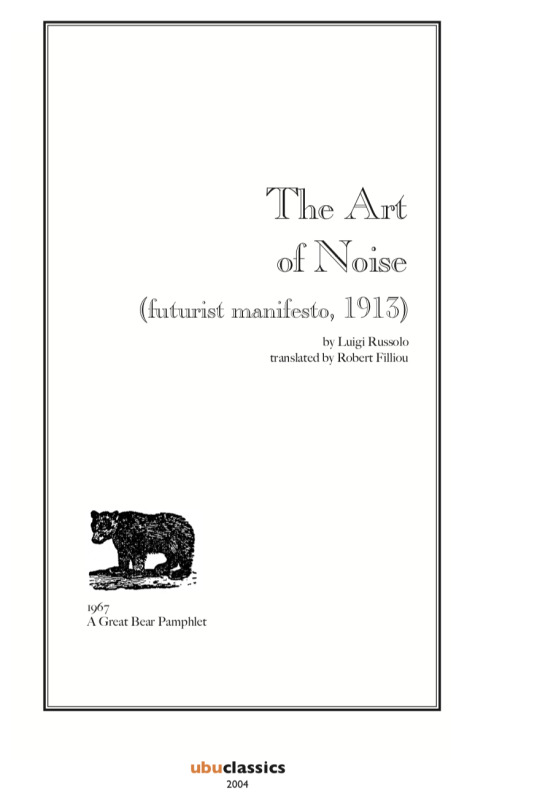
I intend to learn new skills to realise this project, record these noises myself, and experiment with them.
Thoroughout my FMP I have organised my time well and taken on process that are managable in the end I am happy with my creation and the experimentation I have done.
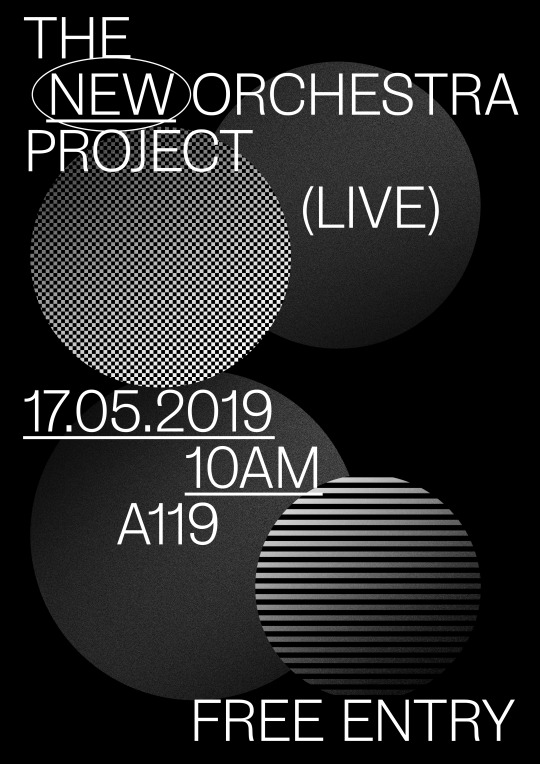

Website inspiration

Using Reaper for spatial panning, learnt from Phillip Mill.

W3 has been a massive help for web coding.


Everything well well.


Coding website using Brackets and learning of youtube videos

Sound control for MIDI and Wacom using Ableton and UMIDI Controller

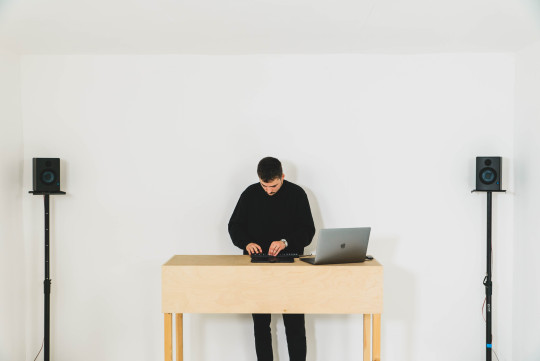
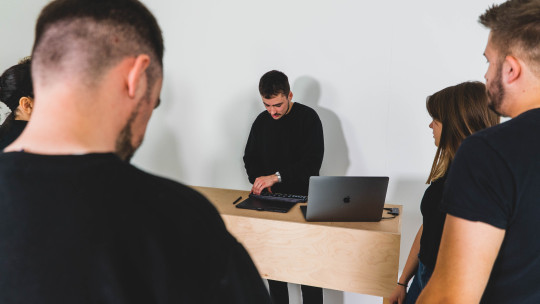
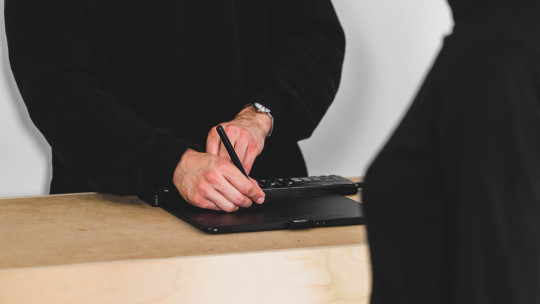
FMP –– Inspiration
Vanishing Point –– Towner Gallery –– London, 2013
uva.co.uk/works/vanishing-point

Vanishing Point employs perspective as both tool and visual outcome to reshape, redefine and represent a space. Inspired by sketches of Leon Battista Alberti, Leonardo DaVinci and Albrecht Dürer, UVA sends lines into space from an arbitrary vanishing point, creating different volumes, divisions and rooms to be explored by the audience.

@leafcutterjohn
vimeo.com/59142013

Light––Controlled Servo
www.instructables.com/id/Light-Controlled-Servo/

Exploring the capabilities of Arduino boards to create a sound experienced controlled by sensors.
https://www.makeuseof.com/tag/best-arduino-alternative-microcontrollers/
Considering cheaper alternatives to Arduino boards.

Comparing the costs of hiring a coder with Arduino experience.
https://www.fiverr.com/cda123/help-you-with-your-arduino-project?context_referrer=search_gigs&context_type=auto&pckg_id=1&pos=3&ref_ctx_id=1856c84a-e91d-4b17-8166-96d542ba4aff&seller_online=true&funnel=34972352-d11b-4922-9fb7-430b717390ba

Whilst learning how to code Arduino has been made simple by many, it is difficult to determine the level of complexity within the time frame available and to what extent it would improve the communication of the project.

The Tunnel
by Friedrich Durrenmatt
Full Text ––
http://ethicsthroughliterature.weebly.com/uploads/3/1/6/2/31623635/the_tunnel_by_durrenmatt.pdf
Summary ––
https://en.wikipedia.org/wiki/The_Tunnel_(short_story)
Youtube ––
https://www.youtube.com/results?search_query=the+tunnel+friedrich+durrenmatt
https://www.huckmag.com/art-and-culture/music-2/youarelistening-listen-hidden-sounds-city-real-time/
https://www.huckmag.com/art-and-culture/man-can-change-mood-light-sound/
https://www.huckmag.com/art-and-culture/music-2/ash-koosha-iranian-artist-building-sound-sculptures-magnified-waveforms/
https://www.dezeen.com/2018/11/23/chemical-brothers-marcus-lyall-adam-smith-show-designers/
http://www.marcuslyall.co.uk/work/on-your-wavelength-canary-wharf-2017-2018/
https://www.ted.com/talks/tony_fadell_the_first_secret_of_design_is_noticing/transcript?language=en#t-955644
https://www.soundlazer.com/what-is-a-parametric-speaker/
https://www.thecsjones.com/writings/2018/4/6/luigi-russolo-and-the-new-art-of-noise
http://www.artype.de/Sammlung/pdf/russolo_noise.pdf
https://www.youtube.com/watch?v=mSlbCABZVlU
https://en.wikipedia.org/wiki/The_Art_of_Noises
https://en.wikipedia.org/wiki/Futurism_(music)
https://en.wikipedia.org/wiki/Intonarumori
https://jezrileyfrench.co.uk/teleferica.php
http://www.ubu.com/papers/kostelanetz.html
https://www.mergrim.net
https://blog.landr.com/10-free-online-music-tools-will-kickstart-creativity/
http://teropa.info/blog/2016/08/10/frequency-and-pitch.html
https://www.deepdataloops.org/patternsketch/
https://p5js.org/reference/#/p5.Reverb

1 note
·
View note
Text
Patrick Thomas Workshop




Working with Patrick was an incredible experience. He got us to experiment with re-printing to create unique posters. Above are some of the original posters I designed and a wall of the final prints from the day. I really want to make a book out of these as it was such a fun day. I fell like I learnt a lot in terms of experimentation.
0 notes
Text
D&AD
With Clerkenwell Design Week as an ongoing project until May, making sense of D&AD at this point is challenging. With communications and changes still required for CDW, alongside trying to figure out what may be a good idea for the Monotype brief is a headache. Whilst I am aware that this is the way in which the “real world” of a professional designer works, it is different to the extent that with D&AD the concept is our decision. The monotype brief is incredibly broad, celebrating a “community” lends itself to an almost infinite number of possibilities. I think this is where the real hurdle is for me… going to realising one project, and flicking the metaphorical switch to another project in an instant. Perhaps this is one area that is in much need of developing: I would like to think that whilst pushing the conceptual boundaries of graphic design communications, the projects I undertake are ambitious. But that moment of finishing one project, taking a breath and then almost instantly deciding the direction for the next…it puts the importance of trusting your originally decision into the spotlight. If I am professional at anything, it would maybe be flip-flopping between ideas. Somehow, the way my mind works can’t stay on one idea throughout the process. Maybe this is a form of perfectionism without realising the damaging nature of this within narrow time scales. I have chosen Fermentation as my community for D&AD. It seemed to be a strong choice at the start: I am able to get closely involved with people that are integrated; it is a popular area of food research and of personal interest; stylistically it could be interesting. Whilst the research I carried out for D&AD was extensive. Talking to resturants, Mold Magzine, reading books, discovering how the community interacted, something always never felt like I was doing it right. I ended up comprimising with a lot of elements, replacing what potentially could have been interesting touchpoint into their most basic form. By the end, yes, it was visually interesting to an extent and I do think that a platform for Fermentors around the world is need. But again, I was changing that design of the products so much that it took away from the ultimate value of and meaning of the project. A platform for fermenters is a good idea, and I send by that. It was very specifically answering a call from the community. I am almost amazed that they haven't created something like this before. With D&AD I think my execution was weak, and not properly undertaking the true value of the concept through design. When it came to what I submitted for D&AD, it was not as good as I wanted. All of these things are evaluations of how I could have done better. I know that I wasted time, I know that for a while I couldn’t get out of the Clerkenwell mindset, I struggled to come to terms with the definite choice of Fermentation. It was a struggle throughout, and whilst I technically did what was required by the terms and conditions of the submission, I am ultltimately not happy with the submitted outcome.








0 notes
Text
Patrick Thomas Book Curation


Toby and I have begun curating the Patrick Thomas workshop posters into a book.
0 notes
Text
Unheard Voices (Version II)
Having left my Unheard Voices project untouched for many months, it was time to revisit it. My previous outcome was far below what I wanted to achieve, because it just didn’t communicate. Feedback that I received from it hi-lighted this ambiguity. So, I went back in to research mode and started looking for a NEW Unheard Voice. This time, I wanted it to be a very clear idea. After research into product designers, I ended up with George Blaisdell. No? That’s what I thought...he is the man that invented and designed the Zippo lighter. Whilst relatively little is known about Blaisdell, the Zippo is an international symbol of America in many respects. I found out that there was a lot of US military history around the Zippo and I thought it might be interesting to go down that avenue. I started collection all sorts of imagery from World War II and the Vietnam War that reference Zippo lighters. Research led me to a series of Zippo lighters that had been collected, showing personal engravings on Zippo lighters from the Vietnam War-era. From this, I started to develop a zine which explored these personal messages. It turns out, that these lighters were often used to burn the houses of those the US opposed during the War. I wanted to hand write all of these messages and curate them into this zine, alongside imagery collected documents. Hand writing these messages provided a more personal account in my opinion. Over a few days I researched materials and designed this book. I am very happy with how it has turned out and it is a critical exploration into a disturbing past of the product Blaisdell created. My aim was to get people to consider that everyday products have alternative uses, whilst carefully documenting these incredible engravings.








0 notes
Text
Set build for Toby.



Helping Toby build a room within a room for his FMP Music Video
0 notes
Text
Final Major Project 2019 Unit 9 Professional & Personal Practice incorporating Unit 10 Blog
Project Summary
The New Orchestra Manifesto
Context
Exploring the noises that make up the world, as defined by (a revised version of The Art of Noises manifesto, written in 1913 by Luigi Russolo.
Research Focus
Research the way in which we perceive sound and how the world has changed acoustically since 1913.
Audience
An audience interested in world of noise we live in.
Media
Audio recording, editing, website coding, and filmmaking.
Outcome
A designed manifesto, website and live performance film.
Professional Practice
Phillip Mill is an audio engineer who provide critical advice on technical audio recording and editing for surround sound.
0 notes
Text
Data Collection
Data Visualisation
Context
For the next seven days, record an aspect of your life as data. It has to be an aspect that you’re able to log consistently. www.dear-data.com. Data can be identified as the facts – a raw representation of things that are known or assumed as facts. Information on the other hand is processed data, conveyed or represented by a particular arrangement or sequence of things. For example, the London Underground map is data represented as visual information. It is also important to understand knowledge in the context of visualising data, as it is the means of understanding data / information, acquired through experience. Data can be structured in a number of ways, and serves as a means of categorising the data. It plays an important role in ordering the data into digestible information. Some s include location, time, hearer
Data visualisation is not an area of design that I have focused on before. However, it is certainly of interest. Much of my work so far has focused on social commentary, but not through data.
For seven days, record an aspect of your life as data.
Whilst the creative possibilities for this project are endless, it is only a short project and I am initially concerned about the overall turn-around times for an outcome. There are many aspects of my daily life that could be interesting to record, but social media is not one of them. I feel that this data set has been recorded extensively and we all know that we spend too much time on our phones. For me, one of the biggest problems facing the world today is climate change and in regards to food wastage and recycling not enough is being done by the government, companies, and individuals collectively.
The evidence for this is extensive – according the one article:
“The UK is facing a plastic pollution crisis amid falling recycling rates and a growing backlog of waste after China stopped importing much of it and disposing it on our behalf, experts warned yesterday. UK households are among the biggest users of throwaway plastic in Europe – while austerity cuts are exacerbating the waste problem by pushing down the amount that is recycled in some councils, they said.” (https://inews.co.uk/news/environment/why-the-uk-faces-a-waste-crisis/)
Only recently, it has come to light that:
“Millions of plastic pots, tubs and trays placed in recycling bins are secretly being incinerated because of a lack of specialist facilities to process them. The plastic is collected from homes but rather than being turned into new products it is sent to “energy from waste” plants that burn it to generate electricity. A waste industry source said more than half the pots, tubs and trays items people had “diligently put in recycling bins” could be going to incinerators.” (https://www.thetimes.co.uk/article/thousands-of-tonnes-of-plastic-recycling-are-secretly-burnt-for-fuel-t6qsfdvj5)
Wastage and recycling is an aspect of our daily responsibilities that is often overlooked.
Something must be done.
Collecting data for this project should be relatively straight forward…the parameters for which would be the date, time, the amount of wastage in grams and the type of wastage. In addition, the impact each set has on the environment could be interesting.

My research has led me to looking at the hundredth monkey effect
Critical mass audience
Morphic resonances
Memory is inherent in nature.
Practice
To realise the data I have collected,
Data collected at home.

In terms of material for my printed outcome, it is important to consider how it will affect the environment. It would be inappropriate to even consider printing onto a material that is not sustainable. At the Chelsea printing services, they use a good quality recyclable paper which I have used before and this will be good for my project. Therefore, it will be made from fully recyclable paper. Designing for print with sustainability in mind also involves considering the binding, for this I have dismissed using staples or glue binding. Due to the small scale of the outcome, binding is not even necessary and so it will just be a double-sided, custom, print on recyclable paper.

My aim with this project is to inform the general public and make clear the impact of wastage.

0 notes
Text
Clerkenwell Design Week
Brief






“People design to take an existing situation to a preferred situation”
For this project we have been asked by Clerkenwell Design Week and Landsdown’s London to interpret and celebrate one of six locations that will be a part of the Clerkenwell Design Week 2019. It is an exciting project as there is the potential for our work to be displayed in public at the end and viewed by the public. It certainly puts the pressure on to create a considered and effective outcome.
From the introductory presentation we were given, each location does seem to have some interesting related history. The prospect of all of this is exciting.
I think that it will be important to consider the way in which people interact with design. For this I have been looking at choice architecture, which looks at impact of presentation on decision making. For me, this seems very relevant. It could be an artwork that has people walking past it all the time, there has to be some founded reason for people to stop and look at the work. Could the artwork change the behaviour of those walking down Passing Alley?
From research on behaviour change I have found that:
People are afforded the liberation qualities of making their own decisions while the benefits of moving away from default human irrationalities are clearly communicated.
There are also two types of systems which humans act on – reflective and automatic.
Reflective refers to the use of logic and reason to make a decision – pausing to think.
Where as, automatic refers to the rapid intuitive process – gut instinct.
“Well design systems tell people when they are making mistakes”
I see this project as a mixture of both of these systems. It requires to engage people to a level that their instinct tells them to stop and then to pause. Whilst this research is not design related, it does provide me with an interesting perspective of the world and how to design for a public exhibition.
This got me thinking about the potential for altering the direction and path itself. Rather than using the walls, what if vinyl on the floor guided passers-by in some way. Maybe to a false exit?
Looking at different visual references, you can see there are a number of possibilities with how to approach this project. One element that may look cool is an AR experience. It would be a challenge as I have no experience with that at all, but I’m sure it could be done. The only thing with AR though is that it requires the audience to really, stop what they are doing, get out their phones etc.…it seems like a lot of effort. It may mean nobody can be bothered to see your work.
What are the needs of the people?
How can working together take steps in achieving these needs?
How can the design amplify clerkenwell?
Each of the locations for Clerkenwell Design Week all have different experiential qualities. Out the locations, I have been allocated with Passing Alley or Pissing Alley as it is otherwise known.
The alley is a means of getting between St. John’s Lane and St. John’s Street. It is relatively dark alleyway which may present a few considerations down the line.
Through research, I found that originally, Passing Alley was a continuation of what is now Briset Street. Over the years the alley has moved location. From research I have learnt that it has a richer history then one might expect. From 1917 to 1919, constant Zeppelin raids destroy much of the buildings in and around Passing Alley. It also marks the beginning to the parish of Saint James, Clerkenwell.
At one end of the tavern where prisoners on their way from Clerkenwell to Newgate were allowed to pause for refreshment.
Favoured place for urination.
– Inducing the urge to urinate
–Preventing the urge to urinate
–Show where to go
–History
–Training the bladder
–Distraction as a method of suppress the urgency
–Research found that orange is a distracting colour.
My research for the project have been split into researching about the history of Passing Alley and methods of design. Designing for change? Comedic impact? Informative? Retelling history? Interact?
The final outcome must be engaging, giving people a reason to stop and learn about the alley. Typography must be clear and legible. When people walk past, they must be able to understand the project. Having never printed on to vinyl before, I am concerned that when if it were to be wrapped on the wall there would be a lot of strange mapping.
What is the most important historical aspect?
The typography must be a clear reference to Passing Alley
Gestalt theory of continuation
Eye is drawn along a path
Used to point towards another element.
The fabric of the local area
What is the fabric of clerkenwell?
Engaged toilet reference – later gave this idea to Maxim
Urination as ritual
What is the fabric of Clerkenwell
It used to be commonly believed that it was legal to urinate on the rear wheel of your car if you had you’ve
Should it have a nosteligiac perception?
Should it be a ‘vocal map’ of local residents?
IDEA recreate wet floor sign
Real engagement - talking to people
It will be difficult to introduce tactile aesthetics or installation art due to the budget limitations.
Michael Barrett last public hanging 1868
Went in alive, out dead.
A good idea came out of the last tutorial…
Last call, 15 minutes before close.


Looking at the idea of calling it Last Orders, related to the prisoner story still…as it is in the parish of Saint James, perhaps doing something with a church bell? A peel of bells? Not the best…the metal of a bell could inform the colour? A ceremonial AR bell with sound ringing through the alley? Maybe it could relate to executions or is that a bit too dark?
Annoyed that I didn’t manage create an outcome for Joe’s project for today. I’ve not really managed my time that well this week. I reckon it would have been more than possible to create a strong outcome, but have been focusing on CDW entirely. Having said that, CDW isn’t looking too bad really. I’ve scrapped all the ‘dated’ pattern designs that I spent Way too much time on and have focused on a three symbol series which represents each part of the story. I think I have also cracked the idea of ‘Last Orders’. This week I couldn’t get my head round this idea of a bell, but now instead using Beer Mats as a potential additional touchpoint to engage viewers. I still need to do a budget, so depending on how much they will costs, I will add them in as an extra touchpoint for the project.



Last push on CDW now. I worked hard over the weekend to get the presentation looking as good as it can be. Just trying to get the wording all good. Writing quality copy is definitely not as easy as it seems. Might do some research and see if there are any tutorials about this. It makes a massive difference having a well written presentation I’ve found. I guess it comes more naturally over time, but definitely need to develop more confidence in copy writing. Received good feedback, people seem to enjoy the addition of beer mats. Everything seems to be well within budget, even with the beer mats, so hopefully the judges will choose the beer mats, almost more interested to see how those are printed than the vinyl in some ways.
It is lunch time, at 2pm, after a very useful D&AD session. It seems that out of my two ideas, the consensus was leaning towards ‘Type Fermentation’. In a way I think this could produce a more interesting outcome, however as a community I am worried it isn’t as defined as Monotype may favour. With the old Druid symbolic language of Ogham however, there is a much clearly community of Druids. Nonetheless, ‘Type Fermentation’ is more interesting to me and I think it could lead to something that Monotype won’t have seen before. I have just emailed Johnny, so hopefully he will respond quickly so that I have time to progress from his answers before Thursday. This afternoon is looking to be a bit crazy. Just about to make final adjustments to my CDW presentation to send off and then off to The Victoria Dalston before 6PM to set up ‘LIMBO’.
LIMBO’ was a great success last night, another ~£500 raised. Not much to comment on today, other than I have found a few spelling errors in my CDW presentation. Can’t be having mistakes in a presentation for a client. It is easy to forget this also as it is set through Chelsea, but it is a live brief. No mistakes. Attention to detail is everything and being hungover from last night is no excuse. Overall, happy with the presentation now, let’s see what the judges make of it tomorrow morning.
Presentations for CDW at Fora Space in Old Street took place this morning. The arrangements for the morning weren’t particularly clear, but it all managed to go smoothly and I am very happy with how it went. Having one person present was a sensible route, although it did mean everyone else merely stood awkwardly in the corner. It is difficult to say whether the judges gravitated towards my design, there was a lot of good research behind the other projects. In reflection, I think the colours aren’t as sophisticated as I thought. The ‘Klein’ blue of the ‘Pub’ symbol was a ‘trend’ which has thankfully died off and I wish I had provided maybe some more colour options to the judges (?). I am confident though in the research I did to celebrate the alley, but let us see what happens. It is now much later in the day and the anticipation is palpable.
As far as InDesign goes, I would say I am confident with my ability. However, the advanced InDesign workshop this morning was incredibly useful. Learning new tips and tricks which will certainly advance the way in which I use InDesign in the future. The much anticipated results of Clerkenwell Design Week were announced shortly after. And, to my astonishment, I won! Whilst much of this project was research, it seemed to have paid off. As they were asking for an outcome which was directly informed by Passing Alley’s history, it was important to understand it with confidence. Whilst there is still more that could be done to make it a more ‘finished’ project, it does convey the essence of the story in a bold graphical forms. For my instagram account, I did change the colours, and I want to see if these work better. One benefit of the symbols is that they are adaptable, so perhaps a few different swatches may have added to the presentation. Who knows? I am very happy and grateful with the result, and I am looking forward to seeing it – not as a mockup – in May. Enough about me. The show sprint in the afternoon was (relatively) productive, with some interesting ideas being discussed. Whilst I was keen to have more clarity with a name by the end, it seems that we are heading in a positive direction, with next to no objections. Afterwards, I did think that – based on what was said – ‘Ceremony’ would be a good name. Based on the communal participation of Stone Circles as a means of ceremony and ritual. It also links nicely with the degree show as a ceremony of our work, I think. Before next Friday, I plan to produce a treatment of this idea to present to the rest of the branding group. It has been a busy, but positive week, with an extra bonus of (co-)winning Location 3 for CDW.
Good news! My work has been chosen for the Design week. Very excited about this. I did think that Maxim presented everyones work very well and I thought other people had very strong outcomes for Passing Alley, especially since it was one with less historical information then some others. Still, can’t believe it…still a while until it will be up though. In reflection I think my presentation could have looked a bit better but, oh well! They also decided to go without the beer mats, which I think was a shame…it would have been very cool to have a set of beer mats that related to the artwork. Perhaps they thought that for the effort of making and promoting them, it wasn’t worth it. The design of them actually was perhaps a bit rushed, while they were a good asset to present…design wise they were not as strong as the main vinyl. It has been a good project, although it has been mentioned that we will be continuing the project until the Design Week in mid/late May. This does concern me a little…and to what extent will we be involved? Obviously as it is a live brief it requires our input, but with D&AD next it does feel a little overwhelming that this dialogue will continue…what if they have changes to do? I’m sure it will be fine.
An update of Clerkenwell recently was that I was asked to submit my work as a “feature” (they called it) for ICON magazine. I can’t believe it! Originally they did say it would get some press but I never thought it would mean this…hopefully this goes ahead.
There have been some updates regarding Clerkenwell recently. Having been in contact with them it doesn’t seem like a colour test will be done in time for it being put up. It is a bit of a shame as I was hoping to see how the colours came out before it went for print. I guess now we will have to wait and see what the outcome looks like. In regards to ICON magazine, the Clerkenwell work is now in the June issue. I just hope this is still happening…lets wait and see.
Only a few days to go until they put up the vinyl…very excited about seeing it in Passing Alley.






So here it is, after a few months of waiting, my Clerkenwell Design Week Vinyl is up in Pissing Alley. Seeing it in person was a great feeling and it looks so much better than my original mockup. The only bad thing is that for some reason, the grey on the Prison section has come out a very blue-grey. Not too sure how this happened, but unfortunately they weren’t able to do / send me a colour test prior to it being put up. At least the other two colours have come out well and the text size is good in my opinion.

0 notes
Text
25-11-18
Following on from Thursday, I am currently trying to find people to help with my Unheard Voices video, which aims to recreate and update a style of therapy from the 1970s called Gestalt. As of yet, I haven't receive a yes from anyone to take part, but I am hopeful that I will be able to get people for Wednesday.
0 notes
Text
23-11-18
Exhibition Meeting No. 2 – Each meeting has gone well so far with lots of good points having been made. The main topic of discussion this week was preliminary concept ideas and each page from the reference Google Document was pinned up and reviewed. Getting everyone to offer ideas will not only give us a sense of our year group, but help create conversation when it is time to go into the respective groups.
0 notes
Text
22-11-18
The deadline for ‘Unheard Voices’ is only about two weeks away and I still haven’t managed to finalise an outcome. However, over the past few days I have researched into Gestalt Therapy sessions in the 1970s. These were an opportunity for people to consider their relationship to the world and help aid the resolution of past conflicts. Simply, it helped people to openly channel their feelings in a group situation. This method of therapy is very interesting and I can relate this to my project. How they link is through channelling our feelings to resolve an issue. These industries, such as trucking, that are labelled for negative reasons and as such discourage others from joining. As a society, we should be expressing openness and equality to all industries, where some have been left behind. After these thoughts, I have come to the outcome of a film recreating this type of therapy and freedom as a visual manifestation of the methodology considered.
https://archive.org/details/anapproachtogrowth
We also had another Spotlight (at) Chelsea tonight. The film was Fish Tank (2009) and it went down very well.

0 notes
Text
21-11-18
Photos for an up-and-coming musician called Sofia, taken in the Upper Casket Studio. Because of this and a meeting to discuss a freelance job, I haven't manage to do any Dissertation or Unit 9 work today. As time is running out fast with the Unheard Voices project, I really need to finalise an outcome. This term I have definitely changed ideas and concepts too much and it has impacted the project greatly. Flip-flopping has held me back in developing one idea and now I am left with practically nothing. Tomorrow I plan to sit down and properly plan out an outcome. I definitely have enough research to create an outcome, I just need to create something physically now.




0 notes















